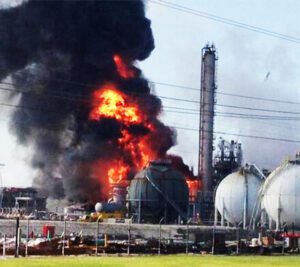
BLOG
Explosive Atmosphere and Ventilation Systems
During the various production processes, there are some materials that can create an explosive atmosphere and therefore of high risk if proper handling and control of them is not carried out, since they release particles during the manufacturing processes, handling or storage,
To this can be added that the slightest spark, increase in temperature, oxidation or mixing of materials can cause ignition and generate an explosion with fatal results and considerable losses for the company. This is due to the fact that some particles suspended in the air, be they dust, fumes, mists or gases, can accumulate inside the buildings, warehouses or ventilation ducts and by not having an anti-explosion system in the ventilation systems and / or collection can lead to a loss.
Industrial Dust, Fume and Mist Collector systems DYNA FLO®, son equipos diseñados por nuestros ingenieros, los cuales son especialistas en el diseño de sistemas para la colección de polvos y sistemas de ventilación, esto permite que los equipos se puedan fabricar con características especiales para ayudar a resolver la problemática en la empresa, ya sea de giro industrial o comercial.
At Grupo Oasis contamos con personal especializado para brindarte la mejor solución y resolver tus problemas de control de polvos y ventilación industrial de forma eficiente.
Factors influencing an explosive atmosphere
An explosive atmosphere is generated when a flammable substance in the state of gas or vapor is mixed with air, in addition to ignition, combustion can spread to any substance that has not yet been affected. Thus, the explosive atmosphere can be generated by dispersion in air of flammable gases, vapors or mists.
For this reason, it is very important to know in detail the type of material with which to work, the conditions and the minimum security measures with which it must be operated, it is also essential in case of working with this type of mixtures, to know the limit Lower Flammability Limit (LII), Upper Flammability Limit (LSI), Lower Explosive Limit (LEL) and Upper Explosive Limit (LSE).
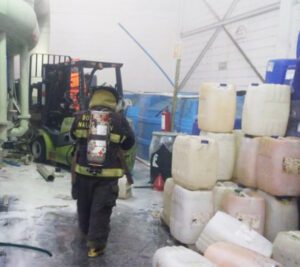
Security and Control
In order for a certain mixture of flammable gases or vapors in air to not produce an explosive atmosphere, it will be necessary to maintain a concentration control that is kept below the Lower Explosive Limit or above the Upper Explosive Limit.
Safe operation outside the flammability range can be achieved in air processes, however, processes that run below the lower flammability limit are safer. In general, whenever possible, the first option is chosen, through the implementation of suitable ventilation or extraction systems, for example, with the use of industrial dust, smoke or mist collectors, pumps or compressors, drying tunnels , kills sparks, to name a few.
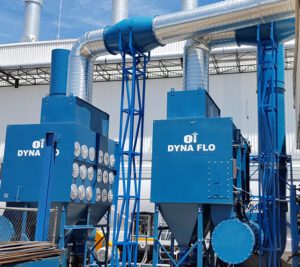
Mata Chispa Cartridge Dust Collection System
Tips DYNA FLO®:
- Avoid the emergence of explosive atmospheres, consult with experts.
- Prevent fire in explosive atmospheres with specialized ventilation systems.
- Reduce possible damage to the health and safety of your employees, applying flammable substances handling protocols.
- Avoid possible damage to the company's infrastructure, with periodic reviews and constant monitoring.
- If you need a control system for dusts, fumes, mists and gases, call us!
Other articles of interest
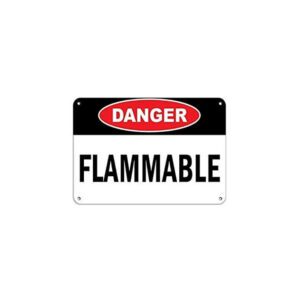
Types of Gases in Industries and ventilation
In the Industrial sector around the world, there are processes that require the use of some type of manufacturing gas, whether they are dedicated to metallurgy, food, health, agriculture, etc. Its use depends to a large extent on the applications and the function it fulfills during the production process.
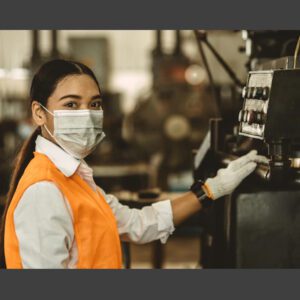
Particle Filtration
In most production processes, micro particles are generated that remain suspended in the air, these are breathed in directly by workers and can cause various respiratory diseases.
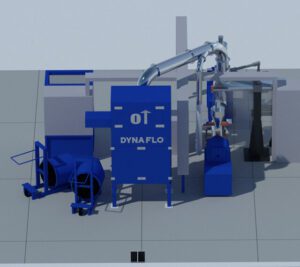
What is the function of an Industrial Dust Collector
La industria en todo el mundo genera a diario grandes volúmenes de contaminantes, esto debido a los diversos procesos de producción, lo que afecta directamente a la calidad del aire dentro de las fábricas…





